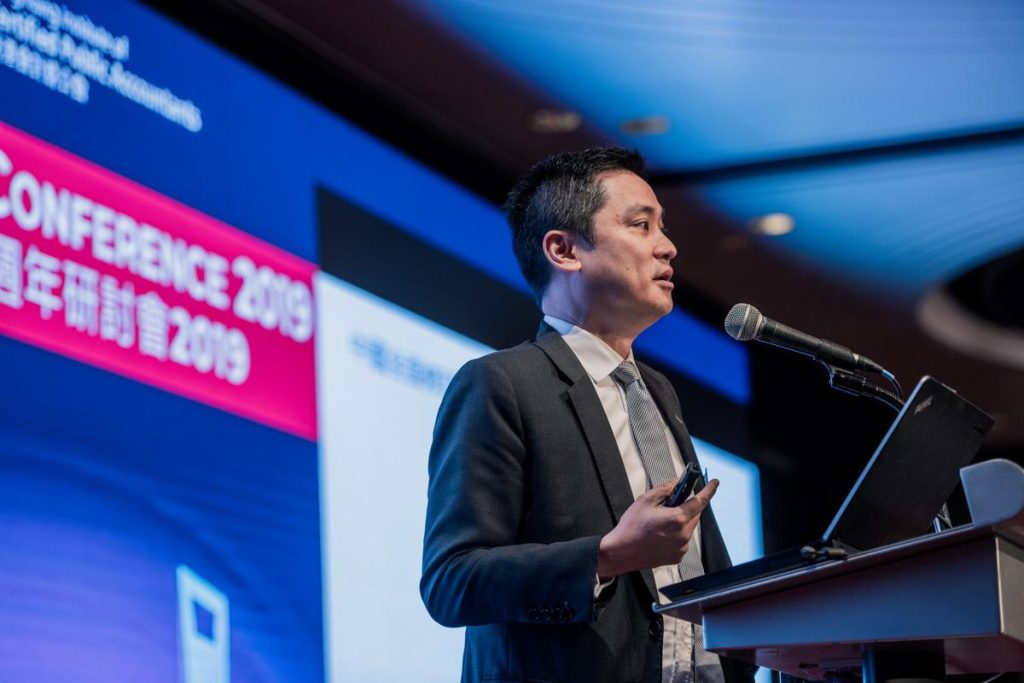A packed ballroom at the InterContinental Hotel proves that taxation is both important and inevitable. The Hong Kong Institute of CPAs held its annual China tax conference on 11 May to provide the much needed answers to questions regarding the recent changes to the tax regimes in the Mainland. William Chan, Convenor of the China Tax Subcommittee kicked the conference off with some background information before speakers covered the latest individual income tax (IIT) (see New individual income tax policies sidebar below) and corporate income tax incentives and developments, transfer pricing, and value added tax (VAT) update (see VAT updates sidebar below), all of which aims to create a more conducive commercial and working environment in Mainland China, promote economic growth, and attract more talent and capital – particularly to the Greater Bay Area (GBA).
The GBA is a strategic economic initiative which Hong Kong is a part of, and could potentially be one of the most economically dynamic regions in the world. Success requires a corresponding dynamic taxation regime to enhance the region’s competitive edge, and Mainland authorities have developed a number of recent national and local initiatives to assist and improve taxation efficiency. The conference speakers noted that those with businesses and investments in the area should carefully consider these new rules and benefits.
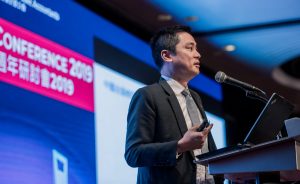
Patrick Cheung, Partner, Global Transfer Pricing Services at KPMG.
Towards a world-class system
One area authorities have devoted considerable energy to is improving the tax regime. The Paying Taxes 2019 report by PwC and the World Bank Group, assessing the tax systems of 190 economies, found that Mainland China has improved in the global rankings through reducing tax rates and the time to file taxes, and also the number of payments.
With 142 hours required for filing in 2017, down from 464 hours in 2007, Rebecca Wong, Partner, China Tax at PwC, and a member of the Institute’s China Tax Subcommittee, highlighted that this improvement was due to authorities introducing a range of initiatives to legislate the existing tax regulations into tax laws, restructuring the organization of tax authorities and optimizing tax systems.
“The number of tax filing and the time required for such filings have decreased, with the hours required dropping very significantly.”
Enhancing the efficiency and convenience of the corporate tax system has reduced the number of trips and meetings with tax bureaus to clarify issues. Mak Ho Sing, Partner, International Tax, at EY, and a member of the Institute’s China Tax Subcommittee, said this has had a welcomed impact. “The number of tax filing and the time required for such filings have decreased, with the hours required dropping very significantly. Furthermore, filing can be submitted online so that companies may no longer need to send personnel to queue up at various tax offices,” he said.
“There is the understanding that the tax system is to serve businesses, and there must be continuous improvement, with many initiatives awaiting gradual implementation. One innovation expected to be announced is to let taxpayers obtain certainty for complex issues for big enterprises,” explained Wong.
She added that a better system that operates more effectively and efficiently benefits both the payer and collector, and it is emphasized that legitimate tax items should be paid promptly and conveniently, while legitimate refunds are seamlessly returned.
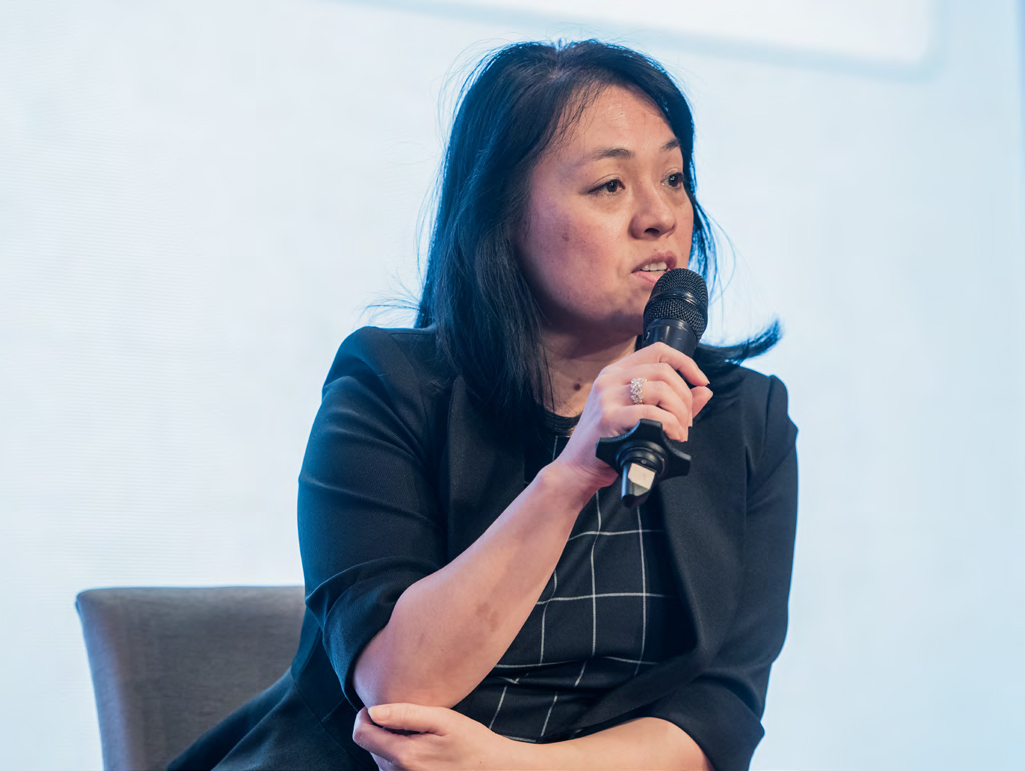
Sarah Chin, Tax and Business Advisory Services Leader – Southern Region, and the National Leader for Indirect Tax and Customs, at Deloitte China.
“There is also a ‘virtual reality’ tax office allowing 90 percent of the procedures to be done remotely.”
Freeing trade zones to innovate
Mainland authorities have long empowered free trade zones within the country to innovate and try new policies to promote growth, and in addition to the central government efforts in reducing the overall tax burdens there are initiatives by local governments to make it easier for businesses. During a panel discussion, speakers examined the current business environment and innovation initiatives in the free trade zones of the GBA, including Shenzhen’s Qianhai zone, Hengqin free trade zone next to Macau, and Guangzhou Nansha Economic and Technological Development Zone.
Qianhai focuses on industries such as logistics, finance, and IT. “Setting up a new company was hard. Now, a platform has been created for foreign investors in Qianhai to proceed with all the steps within two days, instead of the around 20 days needed before,” explained Mak. “There is also a ‘virtual reality’ tax office allowing 90 percent of the procedures to be done remotely.”
There are a number of subsidies granted to new businesses that are in Qianhai’s preferred sectors. “For example, a one-time subsidy could be a maximum of HK$30 million, or you may be given allowance depending on the contribution to Qianhai’s objectives, or the rental subsidy offered may cover up to half of the rent. The point is that Hong Kong enterprises can enjoy many benefits although the subsidy amount may not exactly be the same,” he said.
He added that similar to the Hengqin free trade zone in Zhuhai, there is a favourable corporate income tax rate of 15 percent in Qianhai for specific industries: modern logistics, informational and technological services. “By registering in Qianhai and meeting the criteria, corporations can immediately enjoy the preferential tax rate without approval.”
Looking at tax settlement technology taking place in Hengqin, Wong of PwC highlighted V-Tax, the country’s first remote taxation service terminals installed in computers to handle tax affairs. “It is similar to going to a bank for VIP service. You get access to the taxation bureau through the internet, and the staff will assist you. The local Hengqin taxation bureau cooperates with banks in Hong Kong and Macau. You can go to the bank and it is free to open business account. This is favourable to Hong Kong businesses, especially SMEs.”
Hengqin also aims to attract Macau-based companies. Wong commented that “Macau companies which wish to set up operations in Hengqin for internal services don’t need to set up a separate legal entity in Hengqin. They can use the Macau company to rent office spaces for the internal service operations and they will only be required to pay tax in Macau but not Hengqin in relation to the internal services.”
In the Guangzhou Nansha Economic and Technological Development Zone, Leo Yang, Tax Partner at Deloitte China, advised that though there is no specific policy dealing with investments in the free trade zone, the government welcomes trial projects to be conducted as long as the legal framework permits. Yang mentioned that “while there is a negative investment list in Nansha where investment falling in this list would not be allowed in the zone, the government issued two clear guidance notes on the negative investment list in relation to financial and service sectors. The guidance notes help enhance work efficiency to those who wish to conduct business activities in these sectors.”
This has attracted companies working in logistics, finance, international trade and commerce, and high-end manufacturing, even though there are no tax incentives or IIT subsidy in the past. “However, even without local incentives about tax we still can see that there are many manufacturing companies, high and new tech corporations, and research and development companies. According to the taxation policy in China, there are already incentives for these types of industries, like high and new tech, software, and advanced services, which companies should utilize,” Yang said.

Leo Yang, Tax Partner at Deloitte China.
Easing the individual tax burden
There was a general consensus in favour of the newly-introduced IIT policies and speakers noted how these changes would make it more attractive for Hong Kong people to work in the nine Mainland cities in the GBA. However, speakers noted that authorities have still not issued clarifications on who would qualify as “high end talents or talents in short supply” needed in the GBA cities.
While it is expected that the policies should be similar to what has been implemented in Qianhai and Hengqin, the fact that the nine cities are focusing on different industries means that a unified policy could be difficult.
Daniel Hui, Tax Partner of KPMG advised that “if there are different policies on high end talents or talents in short supply in the nine Mainland GBA cities, will people be able to register and file IIT in one city where they can qualify for a tax rebate but work instead in another city where they do not quality for tax rebates?”
For Hong Kong residents who work in the Mainland but don’t reside there, recent changes introduced concerning the 24-hour day counting rule brings good news. However, the rule only applies to the day counting basis for tax residency for IIT purposes. Hui advised that “many people are getting confused and assumed that the 24-hour day counting rule also applies to day counting for permanent establishment (PE) and the IIT calculation basis for frequent travellers. In fact, there is no change in the day counting basis in these two areas.”
Therefore, while the individual may not meet the rules for tax residency, their physical presence may create a PE for the entity or project they represent, potentially with corporate income tax consequences. Employers will need to check whether they are liable for corporate income tax as a consequence.
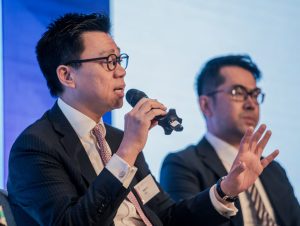
Daniel Hui, Tax Partner at KPMG.
Prepare for AI-directed investigations
Companies may also more face investigations into their anti-base erosion and profit shifting (BEPS) compliance, with authorities investing in artificial intelligence (AI)-directed investigations according to Patrick Cheung, Partner, Global Transfer Pricing Services at KPMG. He commented that BEPS entails the integration of management, auditing and service into a single process, where the large-scale collection of tax-related data would enable the assessment and classification of risks. It places companies into high, medium and low categories, and subsequently allows the implementation of appropriate action for each risk category, for example auditing for high-risk cases. The risk profile of companies would largely be derived from their historical tax information and industry. “AI-driven metadata will be used by authorities for case selection, analysis and auditing,” he added.
There are substantial challenges that companies will face regarding transfer pricing. Increased transparency and sharing of tax information between government bodies and tax authorities would lead to more stringent assessment and management, and a demand for higher standards of transfer pricing documentation. Moreover, there is the possibility of increased tax liability for companies that are audited.
In facing such challenges, caution must be exercised on all relevant aspects of transfer pricing and management of the value chain, ensuring the method of transfer and pricing is appropriate and satisfies corporate objectives, especially for companies undergoing transformation and upgrade, and that have intangible assets. Attention needs to be placed on how specific transactions are conducted between corporate entities, with methods and analyses justified. Cheung stressed that documentation must now be more comprehensive, with more thought given to risk mitigation as well as the position in the value chain that the China-based entities are located, and ultimately how tax authorities will view this.

William Chan, Partner at Grant Thornton Tax Services.
Implementation issues remain
A long-standing issue is the varied interpretations of tax regulations by provincial and local tax authorities across the Mainland. However, it is being addressed as rules become laws. And tax authorities not only share information but also merge operationally, so taxpayers must ensure the information they submit is accurate and consistent.
“While taxpayers can enjoy better efficiency and benefits, they need to properly plan their tax matters, documentation and filing, as their tax responsibility has not lessened,” Wong of PwC commented.
“While taxpayers can enjoy better efficiency and benefits, they need to properly plan their tax matters, documentation and filing, as their tax responsibility has not lessened.”
The benefits, reductions and refunds are all geared towards building a more conducive commercial environment for companies and individuals in the Mainland. With an eye on the GBA, the goal is to make the whole region more globally-competitive. Taxation is inevitably complicated as there are three tax jurisdictions in the GBA, as well as the free trade zones which have their own initiatives.
Yang at Deloitte highlighted that more flexible arrangements to differentiate the taxation systems across the GBA can help its success. “More communication to facilitate breakthroughs in policy; establishment of policies to assist Hong Kong and Macau enterprises to head to the Mainland; and taxation reform measures to account for differences in the system. Together these will help the GBA achieve success from a tax perspective,” he said.
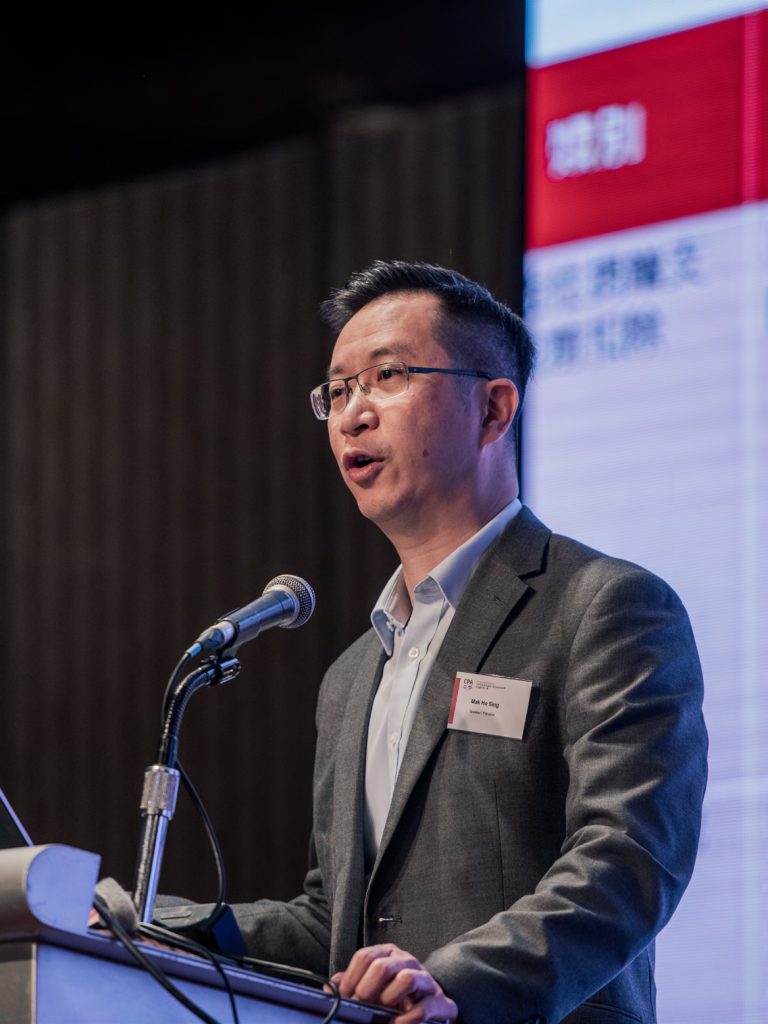
Mak Ho Sing, Partner, International Tax, at EY.
And for foreign companies, the strict foreign exchange controls in Mainland China create hurdles. There are a few policies that would ease cross-border fund flow. The speakers came across success cases for implementing cross- border cash pooling arrangements, but the ease of making outbound remittance from China on outbound direct investments can be variable. “Regarding capital flow out of Mainland China, is outward direct investment OK for that? In these three places, there are some limitations and non-written requirements,” said Wong. “I think it may be better to have another seminar talking about foreign exchange.”
Nonetheless, the actions taken so far are significant and constructive, and give business owners, investors, employees and other stakeholder confidence that the commercial environment can only improve further. Compliance costs in preparing, filing and paying taxes are never light even in the simplest of jurisdictions and business environments, so bringing costs and uncertainties down for all parties involved in a diversified region that is the GBA is remarkable.
It is also clear that authorities have shifted from an enforcement mindset to one of servicing taxpayers. This is indeed great news and reaffirms authorities are responsive and committed in reforming the system towards greater transparency, trust and efficiency that can only be positive for all stakeholders.

Rebecca Wong, Partner, China Tax at PwC.
New individual income tax policies
The conference opened with introductory remarks from Liang Bin, representative from the Guangdong Provincial Tax Services, State Taxation Administration, who succinctly discussed Public Notice 34 (Public Notice Regarding the Criteria for Determining the Days of Non-China-Domiciled Individuals Residing in China) and Public Notice 31 (Public Notice Regarding Preferential IIT Treatment for the GBA), issued in March.
Public Notice 34 outlines new criteria for determining the number of days residing in the Mainland and the Six-Year Tax Residency Rule, both determine individuals’ tax residency status and thus their tax liability for income earned outside the Mainland.
This notice stipulates that an individual is considered a tax resident if he or she stays in the Mainland for 183 days in a year; less than that they are not a tax resident.
“There is amendment to how ‘one day’ is counted – any individual must be physically in the Mainland for a full 24 hours to be counted as one day for tax resident determination purposes, whereas before, the moment the individual crosses the border and enters the Mainland is counted as one day regardless of how long he or she stays there within that day,” Liang explained.
On the Six-Year Tax Residency Rule, in any given year if the individual leaves the Mainland for 30 or more consecutive days, then the calculation of the 183 days required for a qualified year of tax residency resets. And as long as the individual is present in the Mainland for not more than six consecutive years, their income sourced from outside of the Mainland will not be subject to Mainland IIT. Income derived from a Mainland entity requires payment of taxes irrespective of the tax residency status of the taxpayer.
Regarding Caishui No. 31, it clarifies IIT rebate policy in nine cities of the GBA, with the key point being that the Guangdong Provincial and Shenzhen Municipal authorities will provide IIT rebates to overseas to “high end talents and talents in short supply” based on the difference in individual income tax burden between the Mainland and Hong Kong.
“The current amendments create a significantly less stringent tax environment,” said Liang.
Subsequent to the conferences, the Guangdong government confirmed that IIT rebates would be available across all GBA cities for needed talent.
VAT updates
There is also good news on the VAT front. Sarah Chin, Tax and Business Advisory Services Leader – Southern Region, and the National Leader for Indirect Tax and Customs, at Deloitte China, elaborated that: “China has bucked the global trend regarding VAT with its recent reforms by lowering rates, and this is something unusual but very positive.”
In addition to the VAT reduction, the reforms from the Bulletin 39 issued in March, also bring an expansion of input VAT credit and excess VAT refund, she said.
Effective from 1 April, the VAT rates for VAT taxable supplies, and import of certain goods for general VAT payers are reduced from 16 percent to 13 percent, and 10 percent to 9 percent respectively.
The VAT burden on businesses is further reduced with the expansion of input VAT credit to include passenger transportation services and immovable assets, and a 10 percent super deduction for taxpayers in the production, lifestyle, telecoms and postal service sectors.
On the excess input VAT refund, a new pilot programme will allow a certain refund taxpayers subject to conditions, such as the compliance record of the taxpaying company. The objective here is to recover a certain amount of trapped VAT by allowing for refunds of excess input VAT.
“These reforms are positive and unprecedented, no other country has dropped two VAT rates in a year. VAT collection represents over 40 percent of total tax revenues in China, so less VAT will be collected,” Chin explained.





